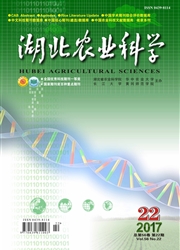

 中文摘要:
中文摘要:
淡水鱼 Carassius auratus 与 PCB118 独自并且在联合被选择为一个试验性的题目,和他们对 Benzo (k) fluoranthene ( BkF )的中期的暴露的肝的生物化学的回答, dichlorodiphenyltrichloroethane ( DDT )被测量减少的谷胱甘肽( GSH )调查,谷胱甘肽 S-transferase ( GST ),并且 thiobarbituric 酸反应物质( TBARS ),估计尚不致命的效果。肝的 GSH 内容被器官的污染物质显著地禁止,独自并且在混合物,当 TBARS 内容显著地在三天暴露以后被导致时。GST 活动的塑造钟的集中反应图表被获得。重要剂量反应关系被作出对有利的裁决肝的 GSH 和 TBARS 所有集中并且为 GST 活动满足,除了在最高的集中。在 Carassius auratus 的 GSH 内容, GST 活动,和 TBARS 内容作为暴露的有用 biomarkers 被证实到器官的污染。
 英文摘要:
英文摘要:
The freshwater fish Carassius auratus was chosen as an experimental subject, and their hepatic biochemical responses to the medium-term exposure of Benzo(k)fluoranthene (BkF) alone and in combination with PCB 118 and dichlorodiphenyltrichloroethane (DDT) were investigated by measuring the reduced glutathione (GSH), glutathione S-transferase (GST), and thiobarbituric acid reactive substances (TBARS), to assess sublethal effects. The hepatic GSH content was significantly inhibited by organic pollutants, alone and in mixtures, while the TBARS content was significantly induced after three days of exposure. Bell-shaped concentration-response charts of GST activities were obtained. Significant dose-response relationships were found for hepatic GSH and TBARS contents of all concentrations and for the GST activity, except at the highest concentration. The GSH content, GST activity, and TBARS content in Carassius auratus were confirmed as useful biomarkers of exposure to organic pollutions.
 同期刊论文项目
同期刊论文项目
 同项目期刊论文
同项目期刊论文
 期刊信息
期刊信息
